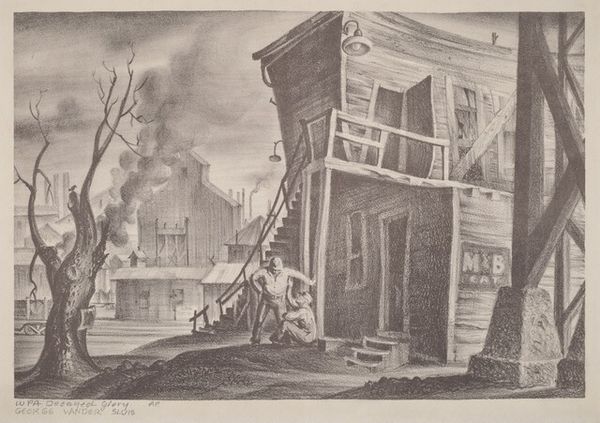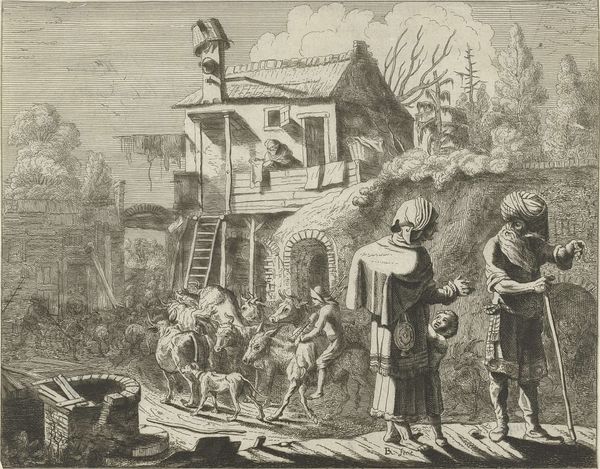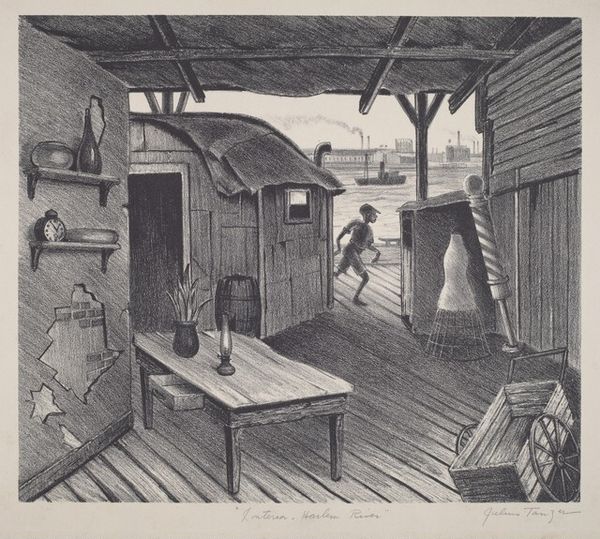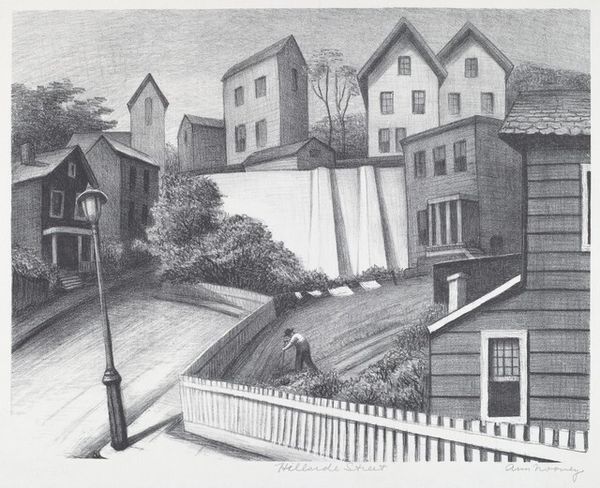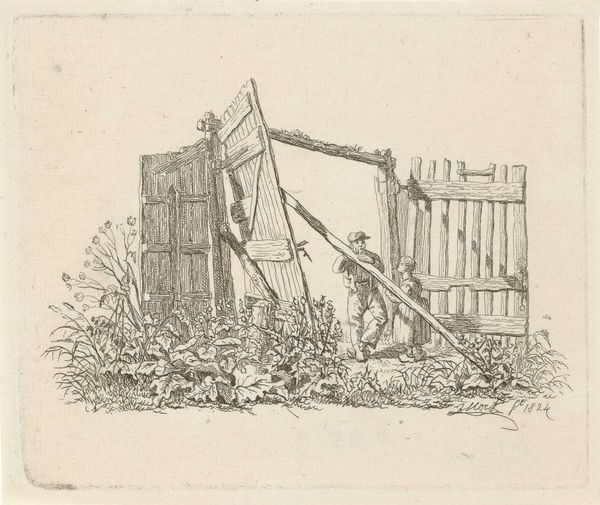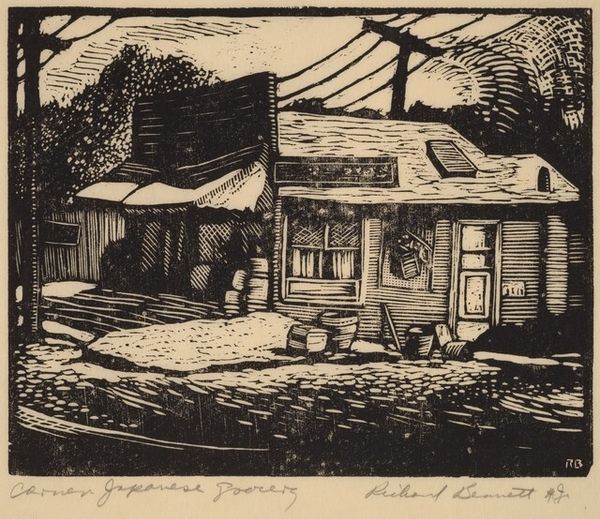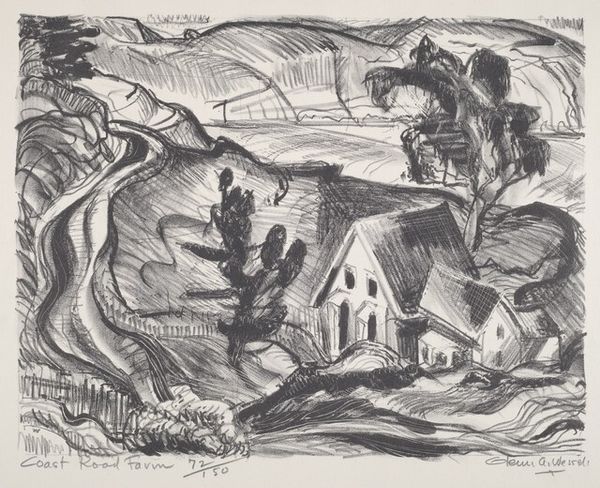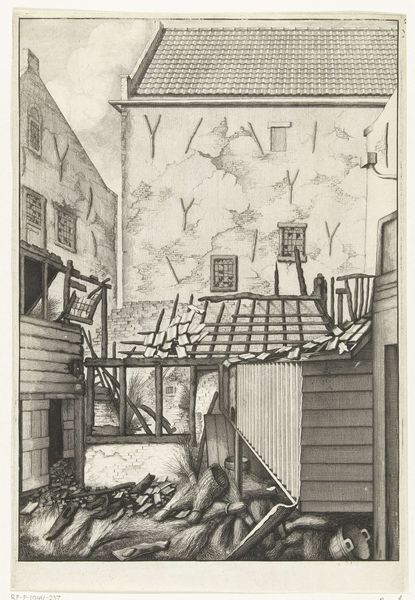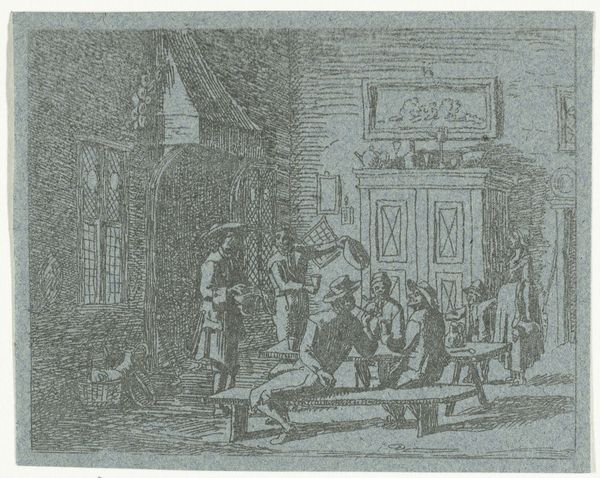
drawing, print, graphite
#
drawing
#
narrative-art
# print
#
graphite
#
realism
Copyright: National Gallery of Art: CC0 1.0
Curator: This compelling graphite drawing, entitled "Story of the Flood" was created around 1936 by Larry C. Rodda. What are your initial thoughts on it? Editor: A quiet terror pervades this piece. It is a strangely still scene of catastrophe rendered with unsettling precision, the detailed linework almost mocks the escalating drama. Curator: It's striking, isn't it? Rodda’s choice of a narrative-driven subject, coupled with realistic style, anchors it within the broader Social Realist movement, capturing the anxieties and resilience of people facing disaster during that era, especially the Great Depression. The ubiquity of printmaking allowed such images to circulate widely. Editor: I agree, though it's interesting how the "everyday" is foregrounded here through the quotidian nature of a single home. Even those rocking chairs stacked on the porch ceiling gesture towards the materials lost and at stake. We also have a visual record here in graphite and print of survival and a portrait of localized environmental and social vulnerability. Curator: Indeed. We see figures actively being rescued from their rooftops, while other, better off, figures appear rather calm and comfortable as the flood laps at their porch. What’s intriguing is the staged quality—the way it invites contemplation on class, access, and social order, brought sharply into focus by environmental hardship. Editor: And notice how he manages to get the water's reflective properties—how it blurs and mirrors elements above the surface with a careful distribution of dark and light that heightens the chaos and precariousness of it all. Graphite really allows for close looking. Curator: Absolutely. In displaying this moment, Rodda asks the audience to ponder not just the immediate crisis, but also who survives and who remains stranded in times of systemic disruption. Editor: The composition, though seemingly simple, carries so many complex layers of class disparity revealed through domestic architecture, possessions, and interpersonal connection through shared catastrophe. Thanks for giving such necessary historical background to these stark realities! Curator: And thanks to you, as always, for examining the textures and physical qualities within it, rendering even more layered observations to draw from this drawing.
Comments
No comments
Be the first to comment and join the conversation on the ultimate creative platform.
